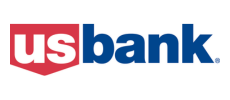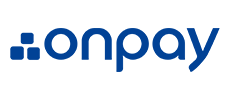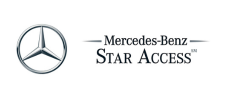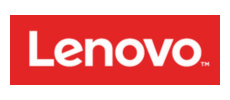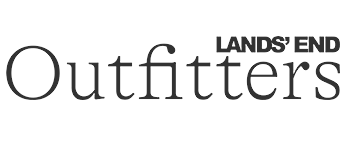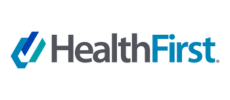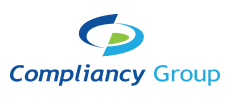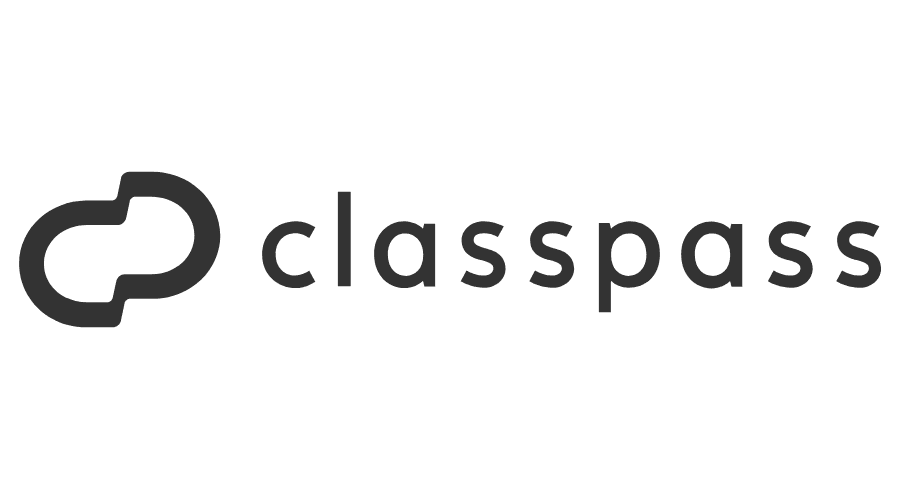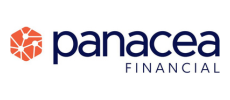USDOL Issues FAQs on No Surprises Act and Affordable Care Act
Per the notice below, the United States Food and Drug Administration (FDA) has issued Frequently Asked Questions (FAQs) on the federal No Surprises Act and on limitations on cost sharing implementation.
FAQs about Consolidated Appropriations Act, 2021 and Affordable Care Act Implementation Part 71
Set out below are Frequently Asked Questions (FAQs) regarding implementation of certain provisions of Title I (the No Surprises Act)(1) of division BB of the Consolidated Appropriations Act, 2021 (the CAA) and certain provisions of the Affordable Care Act (ACA). These FAQs have been prepared jointly by the Departments of Labor, Health and Human Services (HHS), and the Treasury (collectively, the Departments), along with the Office of Personnel Management (OPM). Like previously issued FAQs (available at https://www.dol.gov/agencies/ebsa/about-ebsa/our-activities/resource-center/faqs and https://www.cms.gov/cciio/resources/fact-sheets-and-faqs/index.html, these FAQs answer questions from stakeholders to help people understand the law and promote compliance.
The No Surprises Act
Sections 102 and 103 of the No Surprises Act added section 9816 to the Internal Revenue Code (Code), section 716 to Employee Retirement Income Security Act (ERISA), and section 2799A-1 to the Public Health Service (PHS) Act. Section 104 of the No Surprises Act added sections 2799B-1 and 2799B-2 to the PHS Act. Section 105 of the No Surprises Act added section 9817 to the Code, section 717 to ERISA, and sections 2799A-2 and 2799B-5 to the PHS Act. These provisions provide protections against surprise medical bills for participants, beneficiaries, and enrollees in a group health plan or group or individual health insurance coverage offered by a health insurance issuer with respect to certain out-of-network services that are subject to the No Surprises Act.
The Departments and OPM(2) issued interim final rules (July 2021 interim final rules(3) and October 2021 interim final rules(4)), and the Departments issued final rules (August 2022 final rules(5)) implementing provisions of Code sections 9816 and 9817, ERISA sections 716 and 717, and PHS Act sections 2799A-1 and 2799A-2. Pursuant to Code section 9816(c)(2)(A), ERISA section 716(c)(2)(A), and PHS Act section 2799A-1(c)(2)(A), the Departments also established a Federal Independent Dispute Resolution (IDR) process for resolving disputes between plans or issuers and providers, facilities, or providers of air ambulance services about the out-of-network rate for items or services subject to the No Surprises Act in cases where a specified State law or an applicable All-Payer Model Agreement does not provide a method for determining the out-of-network rate, and the parties do not agree to an out-of-network rate through open negotiation. The Departments have also previously issued guidance on various No Surprises Act implementation issues, including FAQs about Affordable Care Act and Consolidated Appropriations Act, 2021 Implementation Part 55 (FAQs Part 55).(6)
TMA III and Related Guidance: Calculation of Qualifying Payment Amounts (QPAs)
On August 24, 2023, the United States District Court for the Eastern District of Texas (district court) issued an opinion and order in Texas Medical Association, et al. v. United States Department of Health and Human Services et al. (TMA III), vacating certain provisions of the July 2021 interim final rules as well as certain portions of several No Surprises Act guidance documents issued by the Departments.(7) The district court in TMA III held that several provisions of the regulations and guidance are unlawful and vacated and remanded them for further consideration, including provisions related to the methodology for calculating the QPA. The Department of Justice partially appealed the district court's decision in TMA III to the United States Court of Appeals for the Fifth Circuit (Fifth Circuit).
On October 6, 2023, the Departments and OPM issued FAQs about Consolidated Appropriations Act, 2021 Implementation Part 62 (FAQs Part 62).(8) In FAQs Part 62, the Departments and OPM acknowledged the impact of the district court's decision in TMA III on QPAs and the significant resources and challenges associated with recalculating QPAs in accordance with the applicable statutes and regulations that remained in effect after the decision. Therefore, the FAQs stated that the Departments and OPM would exercise their enforcement discretion under the relevant No Surprises Act provisions for any plan or issuer, or party to a payment dispute in the Federal IDR process, that uses a QPA calculated in accordance with the methodology under the July 2021 interim final rules and guidance in effect immediately before the district court's decision in TMA III (the 2021 methodology), for items and services furnished before May 1, 2024, the first day of the calendar month that was 6 months after the issuance of FAQs Part 62. This exercise of enforcement discretion applied to QPAs for purposes of calculating patient cost sharing, providing required disclosures with an initial payment or notice of denial of payment, and providing required disclosures and submissions under the Federal IDR process.
FAQs Part 62 stated that HHS would also exercise enforcement discretion under the relevant No Surprises Act provisions for a provider, facility, or provider of air ambulance services that bills, or holds liable, a participant, beneficiary, or enrollee for a cost-sharing amount based on a QPA calculated with respect to an item or service furnished before May 1, 2024, in accordance with the 2021 methodology.
The Departments and OPM subsequently issued FAQs about Consolidated Appropriations Act, 2021 Implementation Part 67 (FAQs Part 67)(9) on May 1, 2024. In FAQs Part 67, in consideration of feedback from plans and issuers that additional time was necessary to complete the significant efforts associated with recalculating QPAs in a manner consistent with the statutes and regulations that remained in effect after the district court's decision in TMA III (the 2023 methodology), the Departments and OPM extended the enforcement relief provided in FAQs Part 62 for an additional 6 months, that is, for items and services furnished before November 1, 2024.
On October 30, 2024, the Fifth Circuit issued an opinion and order in TMA III,(10) which partially reversed the district court's decision with respect to certain provisions in the July 2021 interim final rules and implementing guidance under the No Surprises Act related to the methodology for calculating the QPA that had been vacated by the district court in TMA III. The Fifth Circuit reversed the district court's vacatur of certain challenged provisions related to the QPA methodology, including the inclusion of contracted rates for items and services "regardless of the number of claims paid at that contracted rate," the exclusion of single case agreements, and the exclusion of bonus, incentive, and risk-sharing payments.(11) The Fifth Circuit also affirmed the district court's vacatur of certain deadline provisions(12) and the district court's holding as to the requirements regarding disclosure of information about the QPA.(13) On December 16, 2024, the plaintiffs in TMA III filed a petition for rehearing en banc.
On January 14, 2025, the Departments and OPM issued FAQs about Consolidated Appropriations Act, 2021 Implementation Part 69 (FAQs Part 69).(14) In FAQs Part 69, the Departments and OPM stated that unless the Fifth Circuit decided to rehear its panel's TMA III decision and altered its judgment, plans and issuers would have to calculate QPAs using a good faith, reasonable interpretation of the applicable statutes and regulations that remain in effect following the decisions of both the Fifth Circuit and the district court in TMA III (the 2024 methodology) upon issuance of the Fifth Circuit's mandate.(15) In recognition of the significant amount of time and resources it may take plans and issuers to again review existing QPAs and recalculate the QPA in accordance with the 2024 methodology, the Departments and OPM extended enforcement discretion originally provided in FAQs Part 62 and extended in FAQs Part 67 for any plan or issuer, or party to a payment dispute in the Federal IDR process, that uses a QPA calculated in accordance with the 2021 methodology, for items and services furnished before August 1, 2025.
In addition, because the Fifth Circuit's mandate had not been issued yet, the Departments and OPM indicated in FAQs Part 69 that plans and issuers may continue to rely on any QPA that had already been calculated using a good faith, reasonable interpretation of the 2023 methodology. The Departments and OPM indicated that, once the Fifth Circuit's mandate issues, they would exercise their enforcement discretion for any plan or issuer, or party to a payment dispute in the Federal IDR process, that uses a QPA calculated using a good faith, reasonable interpretation of the 2023 methodology, for items and services furnished before August 1, 2025. These exercises of enforcement discretion (with respect to the 2021 methodology and the 2023 methodology) applied to QPAs for purposes of calculating patient cost sharing, providing required disclosures with an initial payment or notice of denial of payment, and providing required disclosures and submissions under the Federal IDR process.
The Fifth Circuit did not issue a mandate. Instead, on May 30, 2025, the Fifth Circuit granted a rehearing en banc, and vacated the Fifth Circuit's October 30, 2024 panel opinion.(16) As a result, the aforementioned district court's decision from August 24, 2023 continues to bind the Departments pending the Fifth Circuit's en banc decision.
Q1: How should plans and issuers calculate a QPA for purposes of patient cost sharing, disclosures with an initial payment or notice of denial of payment, and disclosures and submissions required under the Federal IDR process following the Fifth Circuit's order of May 30, 2025 in TMA III?
Until the Fifth Circuit issues its en banc decision, plans and issuers must calculate QPAs using a good faith, reasonable interpretation of the 2023 methodology.
The Departments and OPM acknowledge the impact of the Fifth Circuit's May 30, 2025 order on QPAs and the continued challenges for plans and issuers associated with recalculating QPAs under changing methodologies. The Departments and OPM also recognize that it might take a significant amount of time and resources to review existing QPAs and recalculate the QPAs in accordance with the 2023 methodology, to the extent a plan or issuer is currently calculating QPAs under the 2021 methodology, and to then recalculate QPAs again if required by the Fifth Circuit's en banc decision. Therefore, the Departments and OPM have extended the exercise of enforcement discretion, originally provided in FAQs Part 62 and extended in FAQs Part 67 and Part 69, under the relevant No Surprises Act provisions for any plan or issuer, or party to a payment dispute in the Federal IDR process, that uses a QPA calculated in accordance with the 2021 methodology, for items and services furnished before February 1, 2026, which is the first day of the calendar month that is 6 months after the issuance of these FAQs. This exercise of enforcement discretion with respect to the 2021 methodology applies to QPAs for purposes of patient cost sharing, providing required disclosures with an initial payment or notice of denial of payment, and providing required disclosures and submissions under the Federal IDR process.
HHS will similarly exercise enforcement discretion under the relevant No Surprises Act provisions for a provider, facility, or provider of air ambulance services that bills, or holds liable, a participant, beneficiary, or enrollee for a cost-sharing amount based on a QPA calculated in accordance with the 2021 methodology, for items and services furnished before February 1, 2026.
HHS encourages States that are the primary enforcers of the relevant No Surprises Act provisions with respect to issuers, providers, facilities, or providers of air ambulance services to adopt a similar approach to enforcement. HHS will not consider a State to be failing to substantially enforce these provisions because the State adopts such an approach.
Once the Fifth Circuit's en banc decision in TMA III is released, the Departments and OPM will evaluate whether it is necessary to provide additional enforcement relief. The Departments and OPM do not currently expect any such additional enforcement relief would extend beyond August 1, 2026, the first day of the calendar month that is 12 months after the issuance of these FAQs, but will reassess the status of QPA recalculations and provide additional guidance as appropriate.
Q2: How should plans and issuers make disclosures about the QPA to nonparticipating providers, facilities, and providers of air ambulance services with an initial payment or notice of denial of payment, and in a timely manner upon request of the provider or facility?
Plans and issuers must continue to comply with the requirements related to disclosure of information about the QPA. (17) This includes the requirement to include a statement certifying that the QPA applies for purposes of the recognized amount (or, in the case of air ambulance services, for calculating the participant's, beneficiary's, or enrollee's cost sharing) and that each QPA was determined in compliance with 29 CFR 2590.716-6 and 45 CFR 149.140, as applicable.
For purposes of the statement that each QPA was determined in compliance with applicable regulatory requirements, a plan or issuer may certify that a QPA was determined in compliance with applicable rules where the QPA was calculated using a good faith, reasonable interpretation of the 2023 methodology, as described in Q1.
Further, the Departments and OPM will exercise enforcement discretion for disclosures regarding a QPA provided with an initial payment or notice of denial of payment, consistent with the exercise of enforcement discretion outlined in Q1. Specifically, for items and services furnished before February 1, 2026, the Departments and OPM will exercise enforcement discretion with respect to these disclosures where a plan or issuer that uses the 2021 methodology certifies that a QPA was determined in compliance with 29 CFR 2590.716-6 and 45 CFR 149.140, as applicable, provided that the plan or issuer, in a timely manner upon request of the provider, facility, or provider of air ambulance services, discloses that it is using a QPA calculated in accordance with the 2021 methodology, as applicable.
HHS encourages States that are the primary enforcers of the relevant No Surprises Act provisions with respect to issuers to adopt a similar approach to enforcement. HHS will not consider a State to be failing to substantially enforce these provisions because the State adopts such an approach.
Limitations on Cost Sharing under the Affordable Care Act
Public Health Service Act (PHS Act) section 2707(b), as added by the ACA, provides that all non-grandfathered group health plans, including non-grandfathered self-insured and insured small and large group market health plans, shall ensure that any annual cost sharing imposed under the plan does not exceed the limitations provided for under section 1302(c)(1) of the ACA. Under section 1302(c)(1), an enrollee's cost sharing for a plan year for essential health benefits is limited. This annual limitation also applies to non-grandfathered health insurance coverage offered in the individual and small group market through the essential health benefits requirements of PHS Act section 2707(a).
For plan or policy years beginning in 2014, the maximum annual limitation on an individual's cost sharing under ACA section 1302(c)(1) (sometimes called the maximum out-of-pocket limit or MOOP limit) was set by reference to section 223(c)(2)(A)(ii) of the Internal Revenue Code. For plan or policy years thereafter, the maximum out-of-pocket limit is increased by the premium adjustment percentage described under ACA section 1302(c)(4).
In the Patient Protection and Affordable Care Act; Marketplace Integrity and Affordability final rule, HHS finalized revisions to the premium adjustment percentage methodology as well as new values for, among other things, the premium adjustment percentage and maximum annual limitation on cost sharing for the 2026 plan year.(18)
Q3: What is the premium adjustment percentage for the 2026 plan year?
The premium adjustment percentage for the 2026 plan year will be 1.6726771319.
Q4: What is the maximum out-of-pocket limit for the 2026 plan year?
The maximum annual limitation on cost sharing for the 2026 plan year will be $10,600 for self-only coverage, and $21,200 for other than self-only coverage.(19)
Footnotes
- Pub. L. 116-260, 134 Stat. 1182 (2020). ↩
- No Surprises Act section 102(d)(1) added 5 U.S.C. 8902(p) to require that Federal Employees Health Benefits Program (FEHB) carriers provide these protections to their enrollees. OPM regulations are set forth at 5 CFR 890.114. For purposes of this document, the term "plans and issuers" includes FEHB carriers to the extent consistent with 5 CFR 890.114. ↩
- 86 FR 36872 (Jul. 13, 2021). ↩
- 86 FR 55980 (Oct. 7, 2021). ↩
- 87 FR 52618 (Aug. 26, 2022). ↩
- See FAQs about Affordable Care Act and Consolidated Appropriations Act, 2021 Implementation Part 55 (Aug. 19, 2022), available at https://www.dol.gov/agencies/ebsa/about-ebsa/our-activities/resource-center/faqs/aca-part-55 and https://www.cms.gov/files/document/faqs-part-55.pdf. ↩
- See Tex. Med. Ass'n v. U.S. Dep't of Health & Human Servs., No. 6:22-cv-450-JDK (E.D. Tex. Aug. 24, 2023) (unpublished). ↩
- See FAQs about Affordable Care Act and Consolidated Appropriations Act, 2021 Implementation Part 62 (Oct. 6, 2023), available at https://www.dol.gov/agencies/ebsa/about-ebsa/our-activities/resource-center/faqs/aca-part-62 and https://www.cms.gov/files/document/faqs-part-62.pdf. ↩
- See FAQs about Affordable Care Act and Consolidated Appropriations Act, 2021 Implementation Part 67 (May 1, 2024), available at https://www.dol.gov/agencies/ebsa/about-ebsa/our-activities/resource-center/faqs/aca-part-67 and https://www.cms.gov/files/document/faqs-part-67.pdf. ↩
- Tex. Med. Ass'n v. U.S. Dep't of Health & Human Servs., 120 F.4th 494 (5th Cir. Oct. 30, 2024). ↩
- 86 FR 36872, 36889 (Jul. 13, 2021) (the phrase "regardless of the number of claims paid at that contracted rate"); 26 CFR 54.9816-6T(a)(1), 29 CFR 2590.716-6(a)(1), and 45 CFR 149.140(a)(1) (from "Solely for purposes of this definition a single case agreement" to "or enrollee in unique circumstances, does not constitute a contract"); and 26 CFR 54.9816-6T(b)(2)(iv), 29 CFR 2590.716-6(b)(2)(iv), and 45 CFR 149.140(b)(2)(iv); and 5 CFR 890.114(a), insofar as it requires compliance with the foregoing provisions. ↩
- 26 CFR 54.9817-1T(b)(4)(i), 29 CFR 2590.717-1(b)(4)(i), and 45 CFR 149.130(b)(4)(i) (from "For purposes of this paragraph (b)(4)(i), the 30-calendar-day period begins" to "decide a claim for payment for the services"). The Departments reiterate the guidance contained in FAQs Part 62, Q5, which states that the Departments and OPM expect plans and issuers to make reasonable efforts to determine coverage and provide initial payments or notices of denial of payment where applicable under the plan or coverage within the 30-calendar-day timeframe, and also reiterates existing requirements under the ERISA claims procedure regulation and the Affordable Care Act internal claims and appeals regulation. ↩
- 26 CFR 54.9816-6T(d), 29 CFR 2590.716-6(d), and 45 CFR 149.140(d). ↩
- See FAQs about Consolidated Appropriations Act, 2021 Implementation Part 69, available at https://www.dol.gov/agencies/ebsa/about-ebsa/our-activities/resource-center/faqs/aca-part-69 and https://www.cms.gov/files/document/faqs-part-69.pdf. ↩
- Under Rule 41 of the Federal Rules of Appellate Procedure, the court of appeals' mandate will generally issue seven days after the time to file a petition for rehearing has expired, or seven days after entry of an order denying a timely petition for panel rehearing, petition for rehearing en banc, or motion for stay of mandate, whichever is later. Prior to that time, the district court's judgment continues to bind the Departments. Following the filing of a petition for rehearing en banc by the plaintiffs in TMA III on December 16, 2024, the court issued an order withholding issuance of the mandate on December 17, 2024. ↩
- Tex. Med. Ass'n v. U.S. Dep't of Health & Human Servs., Case No. 23-40605 (5th Cir., May 30, 2025). ↩
- 26 CFR 54.9816-6(d), 29 CFR 2590.716-6(d), and 45 CFR 149.140(d). ↩
- See 90 FR 27074, 27166-8 (June 25, 2025). ↩
- See 90 FR 27074, 27170 (June 25, 2025). ↩




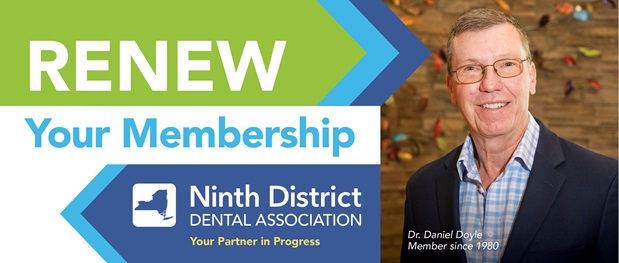



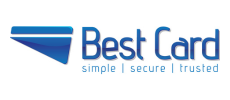

.png?sfvrsn=4447de7f_1)
